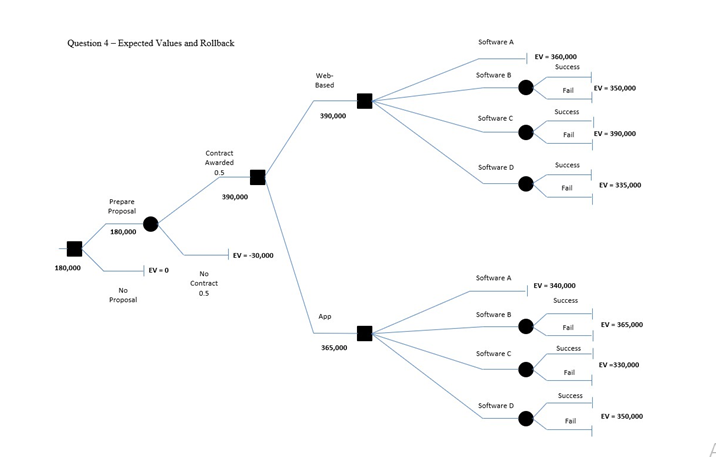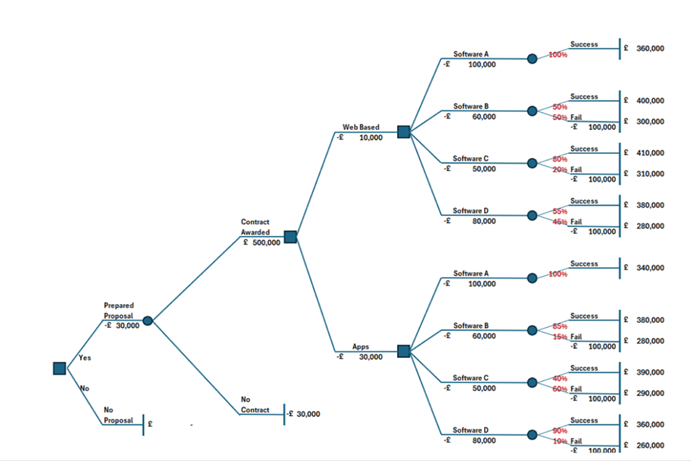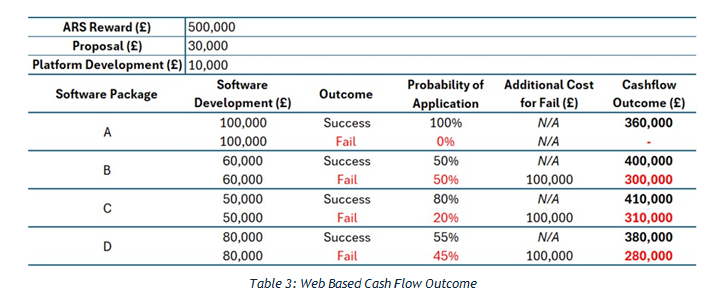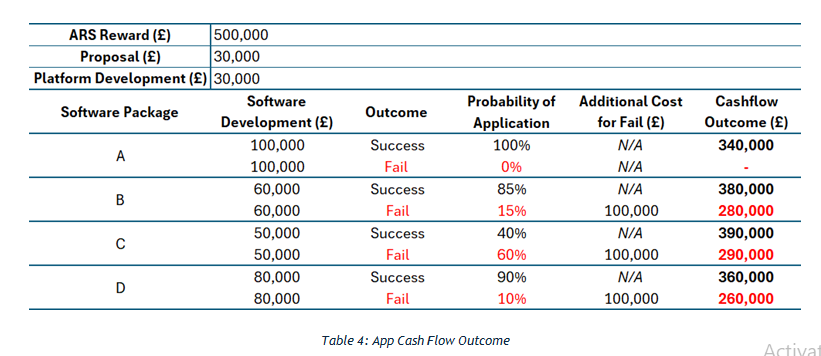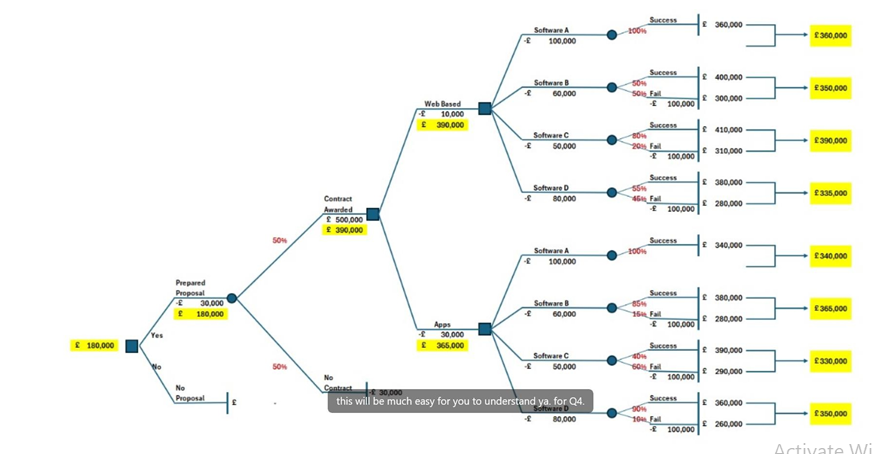- Case StudyHelp.com
- Sample Questions
ATDM [Analytical Thinking and Decision Making] Assignment
Get the best Analytical Thinking and Decision Making Assignment Sample at Casestudyhelp.com. We provide assignment writing services for college and university students. We hired a well-qualified and experienced assignment writer for your homework assessment. Get 100% unique and plagiarism-free work at a reasonable price at any time around the world. Place order now!
- Words – 2000 + Technical analysis
This assignment is based on the UWS Technical Services Decision Making Case Study, which is shown below. It is designed to assess your ability to use an appropriate method to structure and analyse a complex decision problem, and evaluate the strengths and limitations of your analysis
Instructions
Apply decision analysis to the decision problem facing UWS Technical Services and advise the managers on their decision problem. Within your group produce a report of a minimum of 2,000 words that addresses the following questions:
- Discuss the value of decision analysis within the context of an organisation
- Outline the challenges facing UWS Technical Services and discuss any assumptions you have
- Apply decision analysis and develop an appropriate decision tree
- Calculating the expected values and following the rollback method, outline the most suitable approach for UWS Technical Services. Discuss your recommendations for the managers of UWS Technical Services
- Discuss the strengths and limitations of your analysis in the context of the decision problem
- Discuss the influence of the UWS Technical Services engineers changing their initial probability estimates. Discuss the influence of probability estimates and uncertainty within the decision making process
Word length: Minimum 2,000 words excluding references
The assignment should be presented within a report structure. Each section of the report should be clearly structured and defined and an introduction or overview should be provided. Across the report you will also need to show evidence of assessing a range of resources, e.g. internet, journals, text books and company documents such as annual reports. A Harvard Referencing style should be followed. Referencing the minimum of 20.
UWS Technical Services Decision Making Case Study
Audience Response Systems (ARS) is technology company providing equipment for the Higher Education Sector across the globe. ARS provide complete solutions which include hardware and software which allow audiences to participate in multiple choice quizzes and surveys, however, the current provision consists of handheld clickers. With the increased technological functionality built into personal handheld devices such as mobile telephones and tablets ARS have identified this as an area of growth regarding the development of Apps and web-based functionality which will ultimately render the current handheld clicker redundant. ARS has some software development capability in- house, however, it lacks the specific technology and staff skill sets to support the development of Apps and web-based functionality. The future of ARS is dependent on the successful development and launch of this new product, which will replace the existing product and service provision. Due to the significance of this bold business development step ARS has decided to engage a specialist organisation with appropriate research and development capabilities to produce the new product.
ARS had issued an open invite to the technological sector inviting organisations to express interest and after undertaking a screening process has reduced the number of interested parties to two. Both organisations have been asked to provide a detailed project proposal, which should include both a technical development plan, as well as the software capability. Once a successful organisation has been chosen the contract will be awarded on a fixed fee basis for the development of the App/software, as well as a 1-year aftercare provision following the products release to the market place.
One of the two successful organisations is UWS Technical Services, which is a spin-off business with the UWS, and which has received a letter informing them of their successful shortlisting and requesting the detailed project plan. Before this invitation can be accepted it must be considered at a variety of University committees, as the University will need to underwrite any financial loss, as well as being concerned with reputational risk. Therefore, the senior members of UWS Technical Services are pondering if they should progress with the development of the proposal. In doing so they will consider the details below, although this is not exhaustive.
UWS Technical Services will be one of two organisations tendering for the contract and with little knowledge of their competitor they have determined that there is a likelihood of 50% of being awarded the contract. ARS has specified that the software application could be developed for either of two platforms. One is for the handheld device to connect to a web-site through which the participants can undertake the quizzes and/or surveys and the other is to be via the handheld device directly connecting to an in-classroom receiver via WiFi connectivity and an App running in the handheld device. Therefore UWS Technical Services are considering both platforms during their deliberations. A meeting is arranged between UWS Technical Services staff to discuss the project.
Also Checkout: Business Analytics Assignment Help
In the UWS Technical Services meeting four possible solutions are outlined. These could be applied across the web-based or App platforms. It is highlighted that the web-based and App platforms have their own associated costs. Web-based software packages have a development cost of £10,000. App platforms are more demanding and have a higher cost of £30,000. Once a platform is selected (Web- based or App), only this platform can be used within the project. Following a review of the specification within the invitation to tender letter from ARS, the UWS Technical Services staff are concerned that they may not be able to develop a working software package. As a result, each software package has its own estimated likelihood of success. Within the UWS Technical Services meeting the four possible software packages for the project are presented.
The first package is Software A. Using this software package, the UWS Technical Services are 100% certain that they will be able to develop a suitable software application for either a web-based or App platforms. The software package is based on existing UWS Technical Services software that could be adapted for the ARS project. However, given the programming and computer storage required, Software A has a high development cost of £100,000 associated with it.
The second software package is Software B. This software package has lower development costs but the likelihood of success for both platforms is also lower. The development of Software B will cost £60,000. For the web-based platform the UWS Technical Services engineers estimate that there is a 50% chance that the software will function as intended. Across the App platform there is an 85% chance that the software will operate correctly.
The third software package is Software C which has the lowest development costs associated with it. Software C will cost £50,000 in development. Using the web-based platform there is an 80% chance, and the App platform there is a 40% chance, that the software will function without issue.
The final software package is Software D. This software package has a development cost of £80,000. Using the web-based platform, the UWS Technical Services engineers estimate that there is a 55% chance of success and a 90% chance of success across the App platform.
UWS Technical Services must decide whether to prepare a proposal for ARS. If the proposal is accepted, in order to maximise potential profit, UWS Technical Services must select the option that offers the best possible return. UWS Technical Services must decide which platform (web- based or App) and software package (A, B, C or D) is the most suitable for the project. If the proposal is accepted by ARS, UWS Technical Services must deliver a working software package. UWS Technical Services can only work on one software package at a time and given the time and financial constraints of the project, engineers can only develop two software packages. This means that if a software package fails, the second choice must be Software A as this package has a guaranteed chance of success across both platforms. In addition, once a platform is selected, that platform must be used. This means for example, if the App platform is used and Software B is selected as the most suitable option but fails, UWS Technical Services will have to use the App platform for Software A within the project. However, this will reduce the potential return for the project given the additional development costs associated with Software A.
Within the project, there is a moderate cost associated with the development of the proposal. UWS Technical Services believes it will cost £30,000 to develop the proposal for ARS if they decide to prepare a proposal. If UWS Technical Services is awarded the contract they will receive an immediate payment of £500,000 from ARS to develop the software package. Given this information, UWS Technical Services has decided to develop a decision tree to review their options.
Also Read: MGMT20135 Critical Thinking and Managerial Decision Making Assignment Answers
| Component | Weighting | Mark/Comment |
| Question 1 | 15% |
Based on a review of literature students should provide a critical review of relevant literature related to decision analysis. This review should be based primarily on academic sources such as relevant academic journals and textbooks. Discussion could revolve around several areas. These include: – The components of decision analysis – Approaches to decision analysis – The decomposition of decision problems – The use of decision analysis in organisations – Challenges organisations face within decision making/analysis |
| Question 2 | 10% | Students should clearly specify the challenges and assumptions within the case study. Discussion should effectively link outlined assumptions and challenges to the wider decision analysis/decision making area. Discussion should extend to address the possible influence of challenges and assumption.
Challenges include: – General challenges of managerial decision making – Challenges of project management – Probability estimates – Availability of resources – Costs – Group decision making |
| Question 3 | 20% |
Possible decision trees are provided. Each decision point within the scenario should be clearly outlined within the developed decision tree. Students should provide a single and complete decision tree for the case study. The architecture of the developed tree should be clear and modelled on the variables presented within the case. The decision tree should highlight Decision Nodes, Event Nodes and Terminal (End) Nodes. These should be defined within the presented decision tree. Branches should be defined and clearly structured. The analysis is marked at the discretion of the marker. A suggested weighting of each stage of the analysis is provided in relation to the overall weighting (20%) of the question.
Decision points and variables defined – 5% Decision tree architecture. Nodes and branches defined and structured – 10% |
|
Cash flows and outcome variables defined – 5% Cash flow outcomes for software packages calculated:
ARS payment – Proposal Cost – Platform Cost – Software Development Cost = Cash Flow Outcome Eg, for Software B on App – platform: If software succeeds
500,000 – 30,000 – 30,000 – 60,000 = 380,000 If Software B fails 500,000 – 30,000 – 30,000 – 60,000 – 100,000 = 280,000 The additional cost is the cost of then using software A if software B fails
Cash Flow Outcomes:
Web-Based Platform Software A = 360,000, 360,000 (pass, fail) Software B = 400,000, 300,000 Software C = 410,000, 310,000 Software D = 380,000, 280,000
App -Based Platform Software A = 340,000, 340,000 Software B = 380,000, 280,000 Software C = 390,000, 290,000 Software D = 360,000, 260,000 |
||
| Question 4 | 20% |
Possible decision trees are provided.
The expected values should be clearly presented. This should be presented on the outlined decision tree. For example, for Software D on Web-based (380,000*0.55)+(280,000*0.45) = 335,000
Expected Values: Web-Based Platform Software A = 360,000 Software B = 350,000 Software C = 390,000 Software D = 335,000 App-Based Platform Software A = 340,000 Software B = 365,000 Software C = 330,000 Software D = 350,000 |
|
Based on the evidence of the analysis, a clear recommendation should be given. For the scenario, if UWS TS select to prepare a proposal and if it is awarded by ARS, the Web – based approach using Software C is the most suitable option as it offers the greatest return.
Students should outline that if Software C then fails, Software A will be used on the web-based platform. This will result in a lower return. The analysis is marked at the discretion of the marker. A suggested weighting of each stage of the analysis is provided in relation to the overall weighting (20%) of the question.
Expected values calculated and rollback applied – 15% Recommendation outlined – 5% |
||
| Question 5 | 10% | Based on both the evidence of the case study and relevant academic texts, the strengths and weakness of the analysis should be discussed. The influence of assumptions should be linked to this discussion. |
| Question 6 | 15% | Discussion should focus on the influence of probability estimates related to both the case and the wider decision making process.
Students should discuss the role of probability estimates and the influence of uncertainty within decision making/analysis. The influence of increasing/decreasing estimated probabilities within the scenario should be discussed. Altered expected values for software packages could be specified. A sensitivity analysis might be provided and should be rewarded. |
| Report Structure – Structure, flow, presentation, academic writing style | 5% | An introduction to the report should be provided; this may be included within Question 1.
The report should be neatly structured and each section clearly outlined. The report should follow a critical narrative within discussions and the presented analysis should provide clear detail and explanation. |
| Referencing – Use of Harvard Referencing style. Application of academic sources and demonstration of applied critical thought | 5% | A Harvard referencing style should be followed throughout.
A range of academic sources should be provided. This should include academic journal and textbooks outside of the core text. |
| Total | ||
Started on some pointers of the report:
Harvards citation and references at 20
Final Direction:
- Web based: Package C
- Reason why Web instead of Apps (education industry)
Introduction (150 words)
Q1: Discuss the value of decision analysis within the context of an organisation. (300 words)
Q2 – Outline the challenges facing UWS Technical Services and discuss any assumptions you have made. (200 words)
Outlines:
Deciding whether to prepare a proposal for ARS:
- They need to assess the potential profitability and risks associated with taking on this
- Preparing the proposal itself has a cost of £30,000.
Selecting the appropriate platform (web-based or App) and software package (A, B, C, or D):
- Each platform and software package has different development costs and varying probabilities of
- They can only work on one software package at a time and are limited to developing two packages due to time and financial constraints.
- If the first choice fails, they must use Software A, which has a guaranteed success rate but higher development costs.
Maximizing potential profit:
- They need to choose the option that offers the best possible return while considering the associated costs and probabilities of success.
- If awarded the contract, they will receive an immediate payment of £500,000 from ARS to develop the software package.
Also Checkout: MGT 551 Behavior and Organization Individual Assignment Questions
Assumptions:
- The case study assumes that UWS Technical Services will be one of two organizations tendering for the contract, with a 50% likelihood of being awarded the contract.
- It assumes that the probabilities of success for each software package and platform are known and
- The development costs for each software package and platform are fixed and
- The case study assumes that if the first chosen software package fails, UWS Technical Services must use Software A, which has a guaranteed success rate but higher development costs.
- It is assumed that once a platform (web-based or App) is selected, it cannot be changed during the
- The contract with ARS is a fixed fee basis for the development of the App/software and a 1-year aftercare provision following the product’s release to the market.
Q3 – Apply decision analysis and develop an appropriate decision tree (400 words)
Decision Analysis
Decision analysis is a structured way that helps business deciding by assessing alternatives, risks, and criteria (Pestle, 2023). In this analysis, UWS Technical Services faced the decision problem on the development of a new software product for ARS. The company must decide whether to proceed with preparing a proposal for ARS. If they decided to proceed with a proposal and it is accepted, which software and which platform to choose for development. The outcomes of these decisions will impact the company’s potential profit, success, and reputation
3.1 Decision Points and Variables
A). Prepare Proposal
The decision is whether to prepare a proposal, involves a cost of £30,000. This cost represents the investment required by UWS Technical Services to develop a proposal plan for the software development project.
B). Software Package Selection
UWS Technical Services must choose one of the four software packages (Software A, B, C, D) for development. Each package has different development costs and probabilities of success and failure on both web-based and app-based platforms.
C). Platform Selection
Once a software package is selected, UWS Technical Services needs to decide whether to develop it for the web-based platform or the app-based platform. The development cost shown at Table 1.
D). Software A as Back Up Plan
The additional cost for using software A as a backup into the Software Package Selection decision point where happen fail situation.
3.2 Decision Tree Architecture and Nodes
The decision tree serves as a powerful tool for visualizing and analysing the decision problem faced by UWS Technical Services (Asana, 2024). This section presents the architecture of the decision tree and highlights the significance of its development in guiding UWS Technical Services’ decision-making process.
Figure 1 UWS Decision Tree
In this decision tree structure:
- Decision Node 1 represents the initial decision of whether to prepare a proposal or
- Decision Node 2 and Decision Node 3 represent the decision of selecting a software package based on the prepared proposal.
- Software Package Selection nodes lead to further decisions regarding platform
- Event Nodes represent possible outcomes based on the selected
- Terminal Nodes indicate the end of the decision tree, where final outcomes are determined based on the chosen paths.
3.3 Cash Flow and Outcome Variable
In this context will shows the importance of understanding on the UWS Technical Service cash flow. Through the calculation of cash flow and outcome, insights can be gained to inform the selection of software direction. Here, the formula for cash flow outcomes:
ARS Reward – Proposal Cost – Platform Cost – Software Development Cost = Cash Flow Outcome Example for the Software B on App platform Calculation:
Success: £500,000 – £30,000 – £30,000 – £60,000 = £380,000
Failure: £500,000 – £30,000 – £30,000 – £60,000 – £100,000 = £280,000
(The additional cost is the cost of software A as backup if software B fails)
Q4. Calculating the expected values and following the rollback method, outline the most suitable approach for UWS Technical Services. Discuss your recommendations for the managers of UWS Technical Services (400 words)
Q5. Discuss the strengths and limitations of your analysis in the context of the decision problem (200 words)
Q6. Discuss the influence of the UWS Technical Services engineers changing their initial probability estimates. Discuss the influence of probability estimates and uncertainty within the decision making process (300 words)
Conclusion (150 words)
For REF… Use: #getanswers2002633





